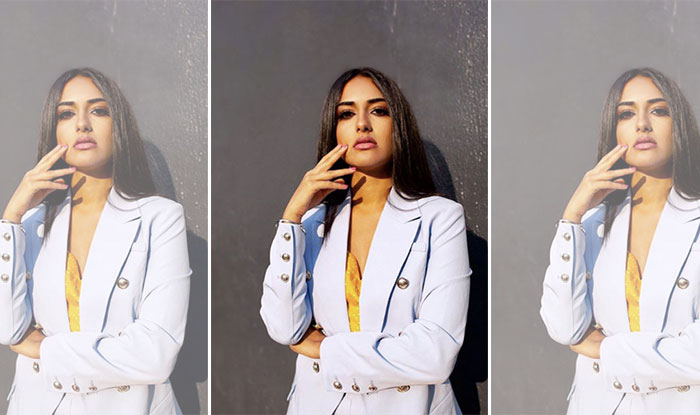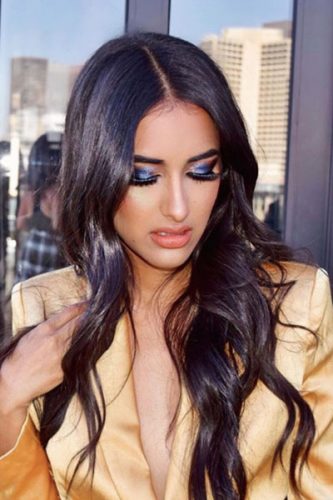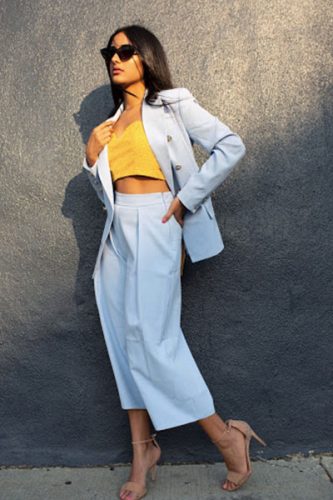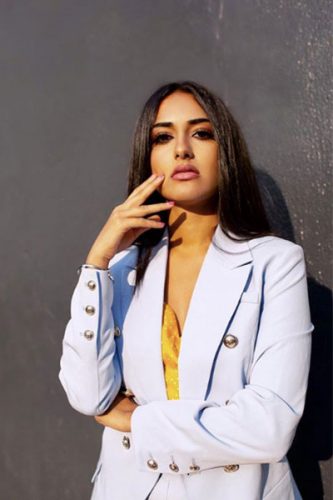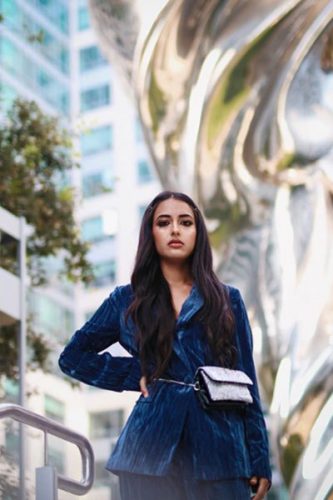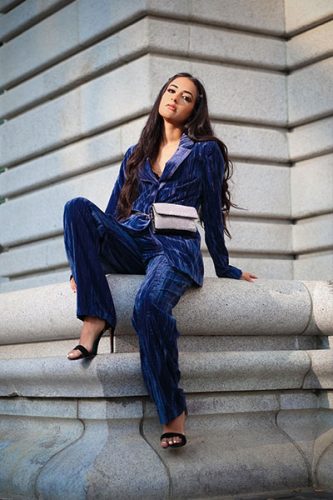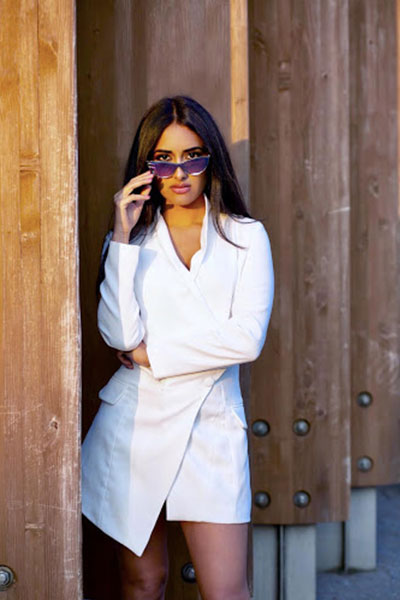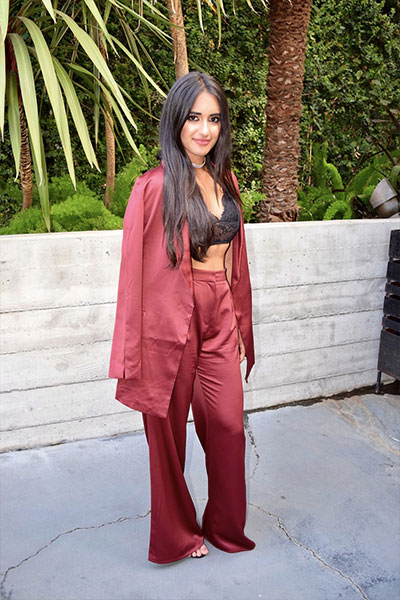There’s something so understated about the masculine cut of a power suit styled in a feminine way. In this juxtaposition of hard and soft, I feel unstoppable.
Here are some of my favorite ways for you to style your power suit and become the CEO your parents always wanted you to marry!
[Read Related: 3 Sexy Outfit Ideas to Help You Turn up the Heat this Valentine’s Day]
1. Go Metallic With Nothing Under
This first one might be my absolute favorite way to style a power suit: With nothing under. I like to highlight my plunging neckline by adding Becca’s pressed highlighter in “Champagne Pop” (pun intended) in the center of my chest. With this kind of look, I would leave the neck bare. It’s best paired with long earrings and a simple heel. It’s worth mentioning as well that several big safety pins plus nipple pasties are a MUST with this style!
2. Go Pastel With a Pop of Color
By far the most summery way to wear a suit: Pair a pastel color with a top under that adds a pop of color. The culotte pants in this set are even more appropriate for hotter weather. I love how the color combo is unexpected but somehow works. I find bright yellow works with almost any pastel color! Since we’re playing with color a lot, I would keep the rest super simple with sleek hair, nude heels, and simple sunnies.
3. Go Velvet With a Statement Piece
I think there’s something beautiful about a feminine velvet fabric with a masculine cut—it’s soft and hard all at the same time. Instead of adding anything under the jacket, I opted for a statement piece on the outside: a super glam fanny.
Another way I could’ve styled this is with a statement belt or necklace—anything that draws the eyes away from the suit so that the suit becomes the canvas for that showcase piece.
4. Go Unexpected With a Blazer Dress
With a blazer dress, I would stick with nudes but really play up the femininity with pink lips/nails and voluminous, teased hair! I kept the jewelry to a minimum to make the suit the star of the look. To complement the stark white suit dress, I added a pair of mirrored cat eye sunnies! I love the combination of silver and white, I think it works so well against melanin-rich skin!
5. Go Sexy With a Lace Bralette Under
I think this way of styling a suit makes lingerie daytime appropriate. It’s suggestive but leaves a lot to the imagination since there’s still a lot of fabric on you. I would keep the jacket styled over your shoulders to make the look feel super sleek. With the lace, it’s really sexy to add a choker or some sort of blingy jewelry to play up the glam. Make sure to have pasties and check if your bralette is see-through via a flash photography test!
Hope these different ways to style a power suit empower you to be a boss babe and own 2019!
